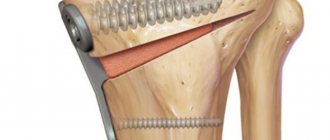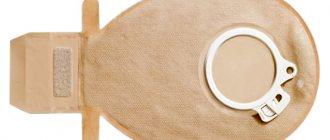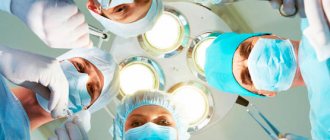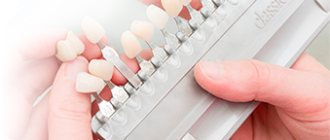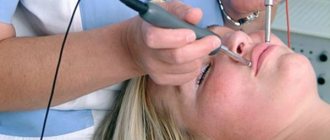Chief editor of the site:
Snitkovsky Arkady Alexandrovich
Chief physician of the professorial dentistry “22 Century”, dentist, orthopedic dentist
Author of the article:
Scientific team of dentistry “22 Century”
Dentists, candidates and doctors of medical sciences, professors
Dental treatment under general anesthesia
Panic fear, a strong gag reflex, allergic reactions to anesthetics and many other conditions are indications for the use of general anesthesia during dental procedures. The patient’s condition after such an intervention is somewhat different from his normal state of health, and this article is devoted to how to behave for the first time after treatment under anesthesia or drug sedation in dentistry .
Indications for general anesthesia
Under general anesthesia in dental practice, it is possible to eliminate almost all problems that arise in the oral cavity - from simple dental caries to complex maxillofacial operations. The patient seeks this type of help, most often, not because of pain, but because of severe fear or medical conditions that interfere with the doctor’s work (allergies, gag reflex, mental illness, etc.). More information about the types of anesthesiological support and how treatment is carried out with switched off consciousness can be found on our website. Here we will talk about the process of postoperative restoration of the patient’s activity , depending on the method of pain relief and the medications administered.
Anesthesia in dentistry
And one more question that interests many: is it worth agreeing to general anesthesia when installing dental implants? In fact, in this case there is no choice. After all, if we are talking about installing 1-2 implants, you can really get by with local anesthesia, but when a dentist does half of the jaw at a time, then working without anesthesia will turn into real torture for both the doctor and the patient. Considering these facts and the safety of modern anesthesiology, most patients agree with the doctor’s proposal and prefer to wake up with a finished result.
How long does it take to recover from anesthesia?
Time to recover from anesthesia
The time to recover from anesthesia after surgery or after caries treatment differs, although not significantly. This is usually 15-30 minutes from the end of medical procedures to the moment when the patient fully regains consciousness and is able to think clearly, talk and walk. This is explained by the fact that the introduction of modern drugs for general analgesia is very effective and their effect can be stopped very quickly. These substances are also quickly eliminated from the body. Of course, the speed at which the body regains consciousness depends both on the patient’s age, his sensations, his somatic diseases, and on the stage of treatment, the period of his stay in medicated sleep, and the method of administering medications. But in any case, the time after anesthesia in dentistry is very short and the patient leaves the clinic on the same day.
Rehabilitation after surgery. Choosing the right diet
Surgery is a great stress for the body, both psychological and physiological. The body's response to a traumatic impact, which in fact is an operation, the neuroendocrine mobilization of protective forces as a reaction to a threatening situation, as well as adaptation to the changed operating conditions of the operated organs - all this requires significant energy expenditure. In the postoperative period, the breakdown of proteins from which new connective tissue is built increases, carbohydrates, vitamins and micro- and macroelements are intensively consumed. Due to the deterioration of the gastrointestinal tract after surgery, and in particular, the slowdown in normal absorption, there is a high risk of protein-energy malnutrition.
That is why nutritious, balanced, and, importantly, easily digestible nutrition is necessarily included in the postoperative rehabilitation program. Unfortunately, often specialists, when fighting an immediate threat to the body, forget about creating conditions to ensure regeneration processes and restore full functioning.
The severity of the disease and the extent of surgical intervention are not the only factors influencing the duration of rehabilitation and the prognosis of recovery. The individual characteristics of each person, his gender, age, bad habits, a set of chronic diseases, general physical and psychological condition must be taken into account not only to develop a rehabilitation treatment program, but also to select the optimal diet. Only nutrition provides access to energy for normal metabolism and building material for new tissues.
The optimal diet after surgery should:
- replenish protein-energy deficiency;
- stimulate the immune system and reduce the risk of postoperative complications, exacerbation of chronic diseases or the addition of hospital infections;
- contribute to the restoration of the patient’s physical activity.
Specialized mixtures from Nestle were created taking into account the pathophysiology of post-surgical processes and the nutritional needs of weakened patients:
- Impact®Oral is an immunostimulating nutrition with proven effectiveness in reducing postoperative rehabilitation time, length of hospital stay, and reducing the risk of postoperative complications;
- Resource®Diabet Plus and Resource 2.0 + Fiber – ready-to-eat, high-protein, high-calorie nutrition for intensive recovery;
- Peptamen® and Peptamen®Junior – nutrition based on hydrolyzed whey protein with a fast energy component in the form of medium chain triglycerides (up to 70% fat component). All components of the mixture are guaranteed to be absorbed by the body even with a damaged gastrointestinal tract;
- Resource Optimum is a balanced diet often prescribed to support recovery after hospital discharge. This is a dry mixture based on milk proteins (50% whey protein and 50% casein).
Impact®Oral
Impact®Oral immunonutrition is indicated for adults and children from 7 years of age before and/or after operations on the gastrointestinal tract, head, neck and other organs and systems.
Arginine-enriched milk protein serves as an excellent material for tissue regeneration.
The immunostimulating effect of nutrition, proven in randomized studies involving more than 2,000 patients in “major” abdominal surgery, is due to the presence of arginine, omega-3 fatty acids and nucleotides in the product in a certain ratio.
Impact®Oral contains medium chain triglycerides (22% of the total fat component) as a quick source of energy for recovery and dietary fiber, which improves the functioning of the digestive system and boosts gut immunity.
Taking the mixture for 5-7 days as an additional or sole source of nutrition allows you to normalize metabolism, immunity, and correct general clinical indicators. After surgery, Impact®Oral is also used for 5-7 days as additional nutrition, 2-3 sachets per day, as a sole source of food, 5 sachets per day. The mixture helps to quickly restore strength, physical fitness and return to normal life.
Resource®Diabet Plus
The product is intended for patients with diabetes mellitus or impaired glucose tolerance, in particular those who have undergone surgery.
The finished mixture, contained in a 200 ml bottle, has enough calories (320 kcal) to combat hunger and provide energy to the body, but at the same time has a low glycemic index and has a beneficial effect on the glycemic and fat profile. The carbohydrate component consists of 90% “slow” carbohydrates and isomaltulose. A high concentration of protein (a mixture of whey and casein proteins) - 18 g per bottle - completely covers the needs of the recovering body in amino acids, consumables for the creation of cellular structures. Dietary fiber Prebio1+ and PHGG (partially hydrolyzed guar gum) normalize the digestive tract and have a beneficial effect on the glycemic profile.
The mixture is intended for oral administration in small sips or through a straw. One bottle replaces a full meal in terms of nutritional composition. Resource®Diabet Plus can be used as a dietary supplement or as the sole source of nutrition. Can be used for feeding through a feeding tube or stoma.
Peptamen®
Patients who have undergone major operations and who experience severe exhaustion in the postoperative period require more intensive nutrition to ensure the absorption of nutrients. In such cases, the product Peptamen® is recommended. Even with a significantly reduced intestinal absorption capacity and a damaged intestinal wall, the components of the Peptamen mixture are well absorbed by the body, supplying the body with the necessary amount of proteins, fats, carbohydrates, vitamins and microelements.
Hydrolyzed whey protein covers 12% of energy costs and reduces the risk of reflux and diarrhea. Medium chain triglycerides, which make up 70% of Peptamen's fat profile, are a readily available source of energy and reduce the risk of fat malabsorption. Cysteine, Omega-3 fatty acids and a balanced ratio of ARA (arachidonic acid) and DHA (docosahexaenoic acid) help control inflammatory reactions and accelerate regeneration processes.
Peptamen®Junior
Peptamen®Junior therapeutic food is recommended for use in pediatrics. Complete semi-elementary nutrition based on hydrolyzed whey protein is suitable for children from one to 10 years of age. The product is suitable for young patients with digestive system disorders and intolerance to standard formulas, in particular those based on casein.
In addition to hydrolyzed whey protein, Peptamen Junior, like Peptamen for adults, contains medium chain triglycerides (MCT) - 55% of the fat profile, vitamins and minerals, which successfully provide the body with energy for rapid recovery. Since Peptamen®Junior is a dry mixture for preparing a drink, its concentration can be adapted individually to the needs of the baby and used as an additional or sole source of nutrition.
Pain after epidural anesthesia
Women who have undergone epidural anesthesia during childbirth often associate the appearance of back pain with the manipulation performed. But in fact, this method of pain relief is extremely rarely the cause of back pain.
What is epidural anesthesia
Epidural anesthesia is used during childbirth - both natural and caesarean sections - as well as during operations on the urinary system and lower extremities.
The anesthesiologist makes an injection and injects a painkiller (anesthetic) into the space between the spine and the membrane of the spinal cord, after which you will no longer feel pain below the injection site, and you will also temporarily (while the anesthetic is active) be unable to move your legs or feel touch from the lower ribs to the tips of the toes.
Such anesthesia is much easier to tolerate than general anesthesia - an epidural has less impact on the overall well-being and functioning of internal organs, and recovery after the procedure is faster. Nevertheless, many patients unfairly consider this manipulation to be the cause of long-term back pain.
Back pain that patients complain about after epidural anesthesia can be divided into two groups: pain directly related to the procedure, and pain for other reasons.
Pain associated with manipulation
In the vast majority of cases, pain after epidural anesthesia goes away on its own within a few hours or days. This may include:
- Point pain at the injection site. Like many medical procedures, epidural anesthesia can cause discomfort for the patient. In this case, they are associated with damage to the ligaments and muscles at the injection site. Unpleasant sensations may bother you for the first few hours after the end of epidural anesthesia. They usually go away without treatment, do not pose a threat to life and health, and therefore you should not worry about pinpoint pain.
- Pain along the nerves that radiates to one or both legs. These sensations are associated with irritation of the nerve roots during injection and administration of the medicine. A “shooting” type of pain is characteristic, usually appearing immediately after the injection and quickly passing without treatment. Don't worry, this is a normal reaction of the body to an epidural.
Pain caused by complications during epidural anesthesia occurs very rarely (less than 1% of all procedures performed). Their cause may be vascular injury or infection at the injection site. Pain at the injection site does not occur immediately, but after several hours; it can have a different nature and clinical manifestations (weakness and loss of sensation in the legs, urinary incontinence, increased body temperature and other symptoms may occur). In this case, you should immediately consult a doctor; there may be a serious danger to your health.
Pain due to other reasons
Most often, the cause of long-term back pain that patients complain about after epidural anesthesia is an exacerbation of existing back problems. For example:
- an uncomfortable position of the patient during surgery can provoke an exacerbation of arthrosis of the joints of the lumbar spine/sacrum or intervertebral hernia;
- Bearing a child and childbirth themselves can cause overload and strain on the ligaments, muscles and joints of the lumbar spine and pelvic bones, which leads to back pain during pregnancy and its intensification after childbirth.
Studies have shown that epidural anesthesia is an extremely rare (less than 0.05%) cause of long-term back pain. However, there is a so-called risk group: overweight patients, as well as those with intervertebral hernias. They experience pain somewhat more often than the average population.
It also happens that back pain is psychological in nature. The very fact of an “injection in the back” can lead to pain in the back in some patients - so-called psychosomatic pain.
Psychosomatic and neurological pain can bother you for months and even years, but they are not directly related to epidural anesthesia. If the discomfort is severe or continues to bother you for a long time, then you need to consult a neurologist.
Examination and treatment
Since pain is most often not associated with epidural anesthesia, a neurologist may recommend further examination in the form of MRI of the spine and electroneuromyography (a study of impulse transmission along nerves) to determine the real causes of pain.
Treatment usually includes a short course of nonsteroidal pain medications (eg, ibuprofen, diclofenac), physical therapy, and manual therapy (if there are no contraindications to it).
Remember: pain directly associated with epidural anesthesia is short-term and usually goes away without treatment. If you experience or increase pain after this procedure, be sure to consult a doctor.
Be healthy!
Maria Meshcherina
Photo istockphoto.com
Related products: (ibuprofen), (diclofenac)
Complications of anesthesia
Therapy is carried out taking into account the reasons that caused the pathological condition. In case of respiratory disorders, the composition and volume of the gas-air mixture is adjusted, and the endotracheal tube is sanitized using an electric suction. If it is not possible to completely clear the airways, call the endoscopic team on duty to perform emergency bronchoscopy. To relieve laryngospasm, narcotic analgesics, atropine, antispasmodics, and adrenergic agonists are used. To saturate the blood with O2, the device is set to enhanced oxygenation mode (100%). Maintaining a sleepy state is ensured by intravenous anesthetics.
Cardiac dysfunction is treated symptomatically. For bradycardia, administration of atropine and adrenaline is required. A decrease in blood pressure against the background of weakened cardiac activity is an indication for transferring the patient to the administration of pressor amines through a syringe pump. The dose of anesthetic may need to be reduced. Arrhythmias are stopped using cordarone, amiodarone, procainamide, lidocaine. Fibrillation that is not amenable to chemical treatment requires electrical defibrillation. When blood pressure increases, antihypertensive drugs are administered; when blood pressure decreases, hypotonic drugs, infusion solutions to replenish blood volume, and steroid hormones are administered.
Short-term postoperative psychosis cannot be relieved with medications. In case of severe psychomotor agitation, the prescription of neuroleptics and narcotic analgesics is allowed. Long-term disorders of the central nervous system require therapy with the use of nootropics, antioxidants, and general strengthening agents (multivitamin complexes, adaptogens). Intestinal tone usually recovers on its own within 1-2 days. In case of prolonged paresis, proserin is administered.
Malignant hyperthermia is an indication for the administration of datrolene, a muscle relaxant that can block ryanodine receptors. In addition, symptomatic treatment drugs and physical methods of reducing the temperature are prescribed (ice on large vessels, wetting the sheets and the patient’s body with cold water, ventilating the patient’s body). For allergic reactions, antihistamines, glucocorticosteroids, and symptomatic medications are infused. Severe manifestations require mandatory tracheal intubation and transfer to mechanical ventilation, if this has not been done previously.
